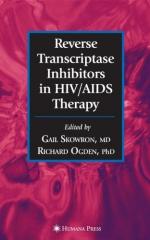|
This section contains 436 words (approx. 2 pages at 300 words per page) |

|
Reverse transcriptase is an enzyme that a retrovirus produces in order to copy its ribonucleic acid (RNA) genetic material into deoxyribonucleic acid (DNA) as part of its reproductive cycle. The word reverse is used because the process reverses the "central dogma of molecular biology"--that genetic information moves from DNA to RNA. Reverse transcriptase was isolated independently in 1970 by the American molecular biologists Howard Temin and David Baltimore. Each man received part of the 1975 Nobel Prize in physiology or medicine for this accomplishment.
The discovery of ribonucleic acid began in 1911 when the American pathologist Peyton Rous (1879-1970) discovered a virus that he proposed transmitted its sarcoma (tumor)-causing ability to cells that it infected. Fifty-five years later Rous received the 1966 Nobel prize in physiology or medicine for his work.
Howard Temin in 1960 theorized that a cell infected by the Rous sarcoma virus made copies of the...
|
This section contains 436 words (approx. 2 pages at 300 words per page) |

|


